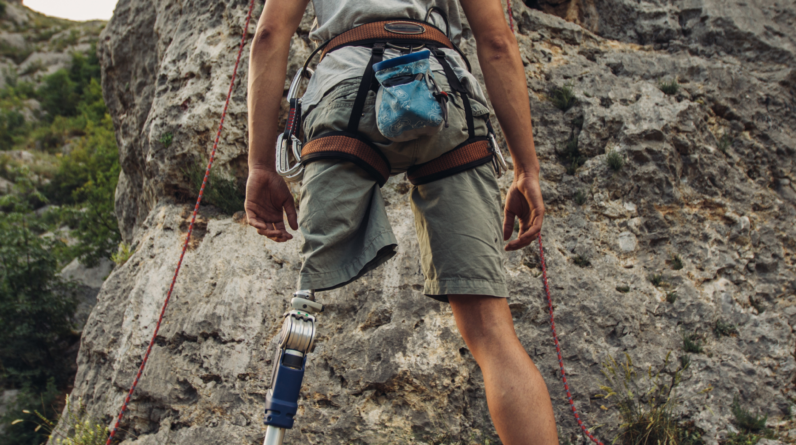
The Difference between Rock Climbing and Wall Climbing
Table of Contents
Introduction
The difference between rock climbing and wall climbing is simple yet significant. Rock climbing is an outdoor sport that involves ascending natural rock formations, while wall climbing is a man-made sport where participants climb artificial surfaces constructed indoors or outdoors. Both activities offer unique challenges and rewards, but they are not the same. Let’s dive into the details!
What is Rock Climbing?

Rock climbing is the sport of climbing sheer rock faces and outcroppings, using specialized equipment and climbing techniques. The principles of rock climbing are similar to those of mountain climbing; however, rock climbing is not directed at an ascent to the peak of a mountain, and the suitable rock formations for sport climbing can occur at any elevation.
What is Wall Climbing?
Wall climbing is a sport that is a man-made creation; wall climbing is a miniaturized form of rock climbing, where the participants climb artificial surfaces constructed from wood or other materials and built either indoors or outdoors.

Key Differences
- Environment: Rock climbing takes place on natural rock formations outdoors, while wall climbing is done on artificial structures that can be located indoors or outdoors.
- Equipment: In rock climbing, the essential equipment includes specialized shoes, a harness, and various types of anchors to be inserted into the rock face. Wall climbing requires less equipment, usually just climbing shoes and sometimes a harness.
- Technique: The techniques employed in rock climbing and wall climbing vary according to the difficulty of the climbing surface and the skill level of the climber.
- Risk: Rock climbing can pose a risk of falling from a significant height, especially if the climber is not properly secured. Wall climbing, particularly bouldering, can also pose risks, such as sprained ankles, broken feet, and knee injuries due to falls from a shorter height.
- Training: Training for rock climbing often focuses on endurance and memorizing sequences for longer routes. Bouldering training, on the other hand, focuses on max-strength, technical footwork, and mastering specific moves.
Conclusion
In conclusion, while rock climbing and wall climbing may seem similar at first glance, they are distinct activities with their own unique challenges, techniques, and rewards. Whether you prefer the natural challenge of rock climbing or the controlled environment of wall climbing, both offer a great way to stay fit and have fun!
Benefits of Rock Climbing and Wall Climbing

Rock climbing and wall climbing, while different in their environments and techniques, share many benefits. Here are some of the benefits you can expect from engaging in these activities:
- Cardiovascular Workout: Fast-moving sports such as running, soccer, and cycling come to mind as workouts that elevate your heart rate. But climbing gets your heart pumping, too, as it involves a lot of pulling, pushing, and lifting. And the more challenging the climb compared with your ability, the more of a workout.
- Full-Body Exercise: It’s not surprising that hauling your body up a cliff wall builds muscle in your arms, but climbing is a full-body exercise. In addition to giving your biceps, triceps, and deltoids a workout, it also calls on your abdominals, obliques, glutes, thighs, calves, and more.
- Improved Flexibility, Balance, and Coordination: Climbing requires you to be able to stretch your arms and legs high and wide, plus contort your body into unusual positions. And, of course, you need to balance on tiny footholds. The more you climb, the better your flexibility, balance, and coordination.
- Cognitive Benefits: Much of rock climbing’s skill lies in determining and memorizing your climbing route beforehand. You also need to be able to problem-solve on the fly, changing your route or sequences if you encounter unexpected obstacles.
- Communication Skills: Communication skills are essential to your safety. Roped climbers have a companion on the ground called a belayer, who handles the rope through a device to manage the tension or slack, catch any falls, and lower the climber. Throughout a climb, the duo must constantly communicate about such concerns as desired rope tension, when the climber wants to rest, and when it’s time to come down.
- Building Trust: Belaying – whether you’re the belayer or climber – involves a lot of trust since it’s essential to safety.
- Social Benefits: Indoor climbing offers physical, social, and psychological benefits, including camaraderie.
- Mental Health Benefits: Like many other forms of exercise, rock climbing can help battle the blues. Researchers in Germany found rock climbing to be successful psychotherapy for adults with depression, thanks to its physical, social, and mental benefits.






